Soil Food Web Gardening
List of contents
While it may be old news for organic gardeners, with writers like Elaine Ingham championing soil food web gardening since the late nineties and the more recent success of Jeff Lowenfels' highly influential book 'Teaming With Microbes', this approach has recently been catching on with organic cannabis growers who are being won over by the vigorous vegetative growth, increased plant health and more importantly, many claim increased yield and terpene production in their flowers!
The term 'Soil Food Web' was coined by Elaine Ingham and refers to the relationships between the many and diverse species of organisms found living in soil. A balanced, well functioning soil food web is vital for healthy plants - most gardeners are familiar with the physical and chemical aspects of soil science - taking care to provide the plants with the correct soil type/texture and with adequate nutrition, but are often unaware of the equally important role played by soil biology in a healthy, vibrant garden - it's all too easy to focus on the activity and growth above ground to the exclusion of everything else, but in doing so we risk ignoring the vital interactions taking place out of sight below the ground in unbelievable numbers.
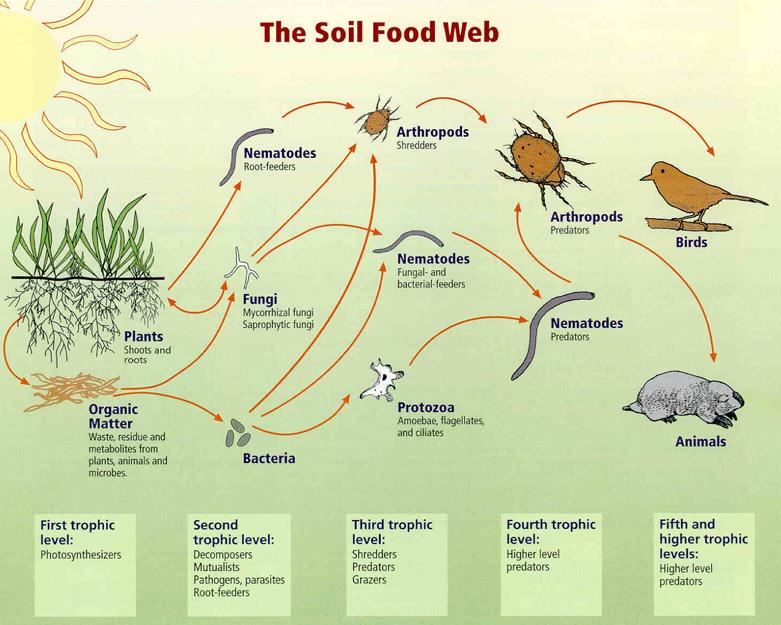
It's impossible to see this complex microbial world without the aid of a microscope and very difficult to imagine the scale, so to put things into perspective it's been suggested that a handful of healthy garden soil can contain more micro organisms than the number of all the humans who have ever lived: a trillion bacteria, 10,000 protozoa, 10,000 nematodes and 25km of fungal hyphae! But what are they all doing and how do they help our plants? How can we help to keep it in balance and maximize the potential of our garden? In this article we're going to take a quick look at these organisms and relationships to try and get an understanding of how best we can care for the biology in our soil.
So, what exactly is the Soil Food Web? While a food chain illustrates a simple linear transfer of energy, for example from grass to gazelle to lion, in soil there is a more complex set of relationships at play and hence in a food web we can see that the potential energy pathways are variable, interchangeable and cyclical rather than linear.
Most of the energy being transferred in the soil food web originates from the plant's photosynthesis of sunlight, combined with minerals and C02 to make organic compounds, these are fed upon by specialist bacteria and fungi which not only break down and digest dead plant matter which they excrete as plant-available nutrients, but are also attracted to and feed upon carbohydrates and proteins produced by the plants roots, these are known as root exudates and amazingly the plant changes the chemical composition of these exudates throughout the growing season, attracting different species and numbers of microbes depending on the plant's needs at any given time. Scientists have suggested that a plant is capable of releasing up to 20% of its photosynthetic production as root exudates, demonstrating the important role they play in soil biology and plant health.
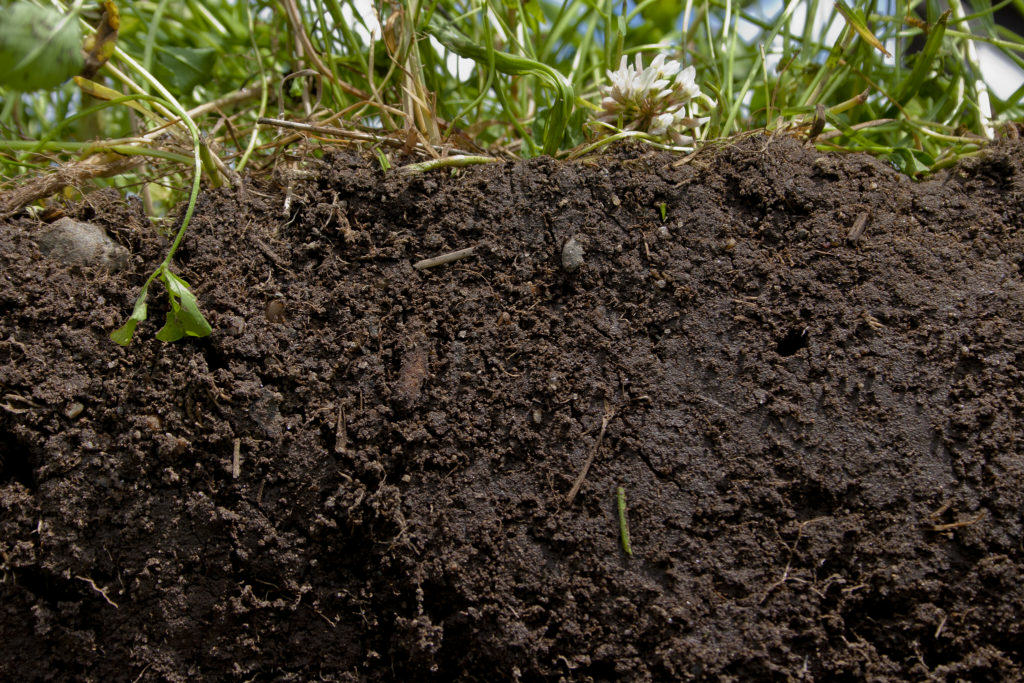
The Key Players
The foundation of the soil food web is made up of the bacteria and fungi, which survive by consuming organic matter and root exudates. The nutrients and carbon they ingest is stored in their bodies, and eventually released and distributed as plant-available food throughout the soil in the form of waste matter when they are eaten by nematodes and protozoa, arthropods and earthworms. Here's a bit more detail about some of the more important members of the micro-herd:
Bacteria are primary decomposers of organic material, breaking down plant and animal matter into detritus, producing, storing and releasing plant-available nutrients in the soil, they provide food for protozoa and nematodes, assist in movement of water in the soil and are essential for soil structure, binding particles of soil together with microscopic bacterial slime. They help to regulate pH and nutrient uptake and can form symbiotic relationships with plants - legumes like peas, clover and alfalfa owe their nitrogen-fixing capabilities to specialist bacteria in the root zone. If conditions are favorable, beneficial bacteria will outcompete pathogens and colonize potential infection sites, helping to keep plant disease at bay.
Fungi are also primary decomposers of organic material, cycling, storing and distributing nutrients. Fungi are both food for, and predators of nematodes. Some fungi are able to form mycorrhizal associations with plants (more than 80% of plants form these associations), a kind of symbiotic relationship with plants with the fungi giving up water, enzymes and nutrients in exchange for plant root exudates, effectively extending the root zone of the plant via vast lengths of hyphal strands threading their way through the soil. These strands also help soil structure, sticking soil particles together and making pathways for air and water, even after they die and break down. Beneficial fungi like trichoderma can trigger the plants' disease resistance mechanisms and help to fight the pathogens responsible for plant diseases like botrytis.
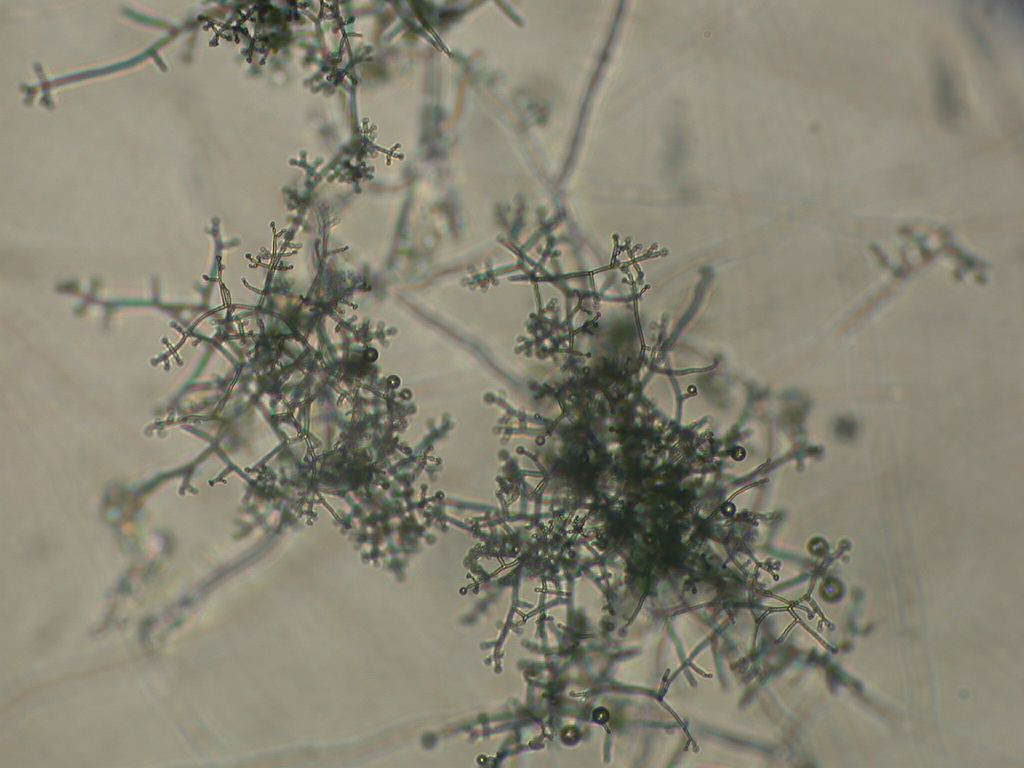
Protozoa are single celled non-fungal, non-algal organisms that consume the bacteria, releasing the stored nutrients as excrement in plant-ready form in the root zone, keep bacteria numbers in balance and also help to control nematode populations, both by predation and competition for resources, at the same time being a food source for predatory nematodes. Protozoa need a moist, well aerated soil and healthy numbers of protozoa are absolutely essential for the presence of earthworms.
Nematodes are tiny roundworms, some species feed on plant matter, others on bacteria, fungi, while predator nematodes eat protozoa, other nematodes, grubs and other small soil-dwelling species, even slugs. Nematode action releases nutrients in the root zone, transports bacteria to different parts of the soil and increases fungal activity, accelerating the decomposition of organic matter. Nematodes need porous soil to move around and will die off if the soil becomes over-compacted.
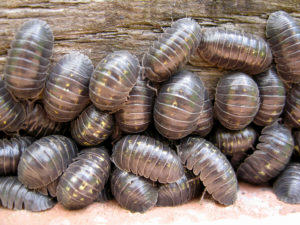
Soil arthropods like woodlice, mites, ants, termites and springtails shred organic matter while feeding, accelerating decomposition, improving soil and increasing microbial activity, spreading nutrients and bacteria in the rhizosphere. Predator species will feed on others, keeping less beneficial arthropod numbers under control, for example Hypoaspis Miles, a soil mite that is a very effective predator of fungus gnat larvae.
Earthworms are easily the most visible and recognizable member of the soil food web, hugely important to gardeners, performing the essential work of moving and aerating the soil, all the while shredding and ingesting organic matter, providing food for fungi and bacteria, producing and spreading their nutrient, mineral, enzyme and microbe-rich compost, vastly improving soil structure, fertility, drainage, and balancing pH. Worms improve soil by adding organic matter (50% more) and increasing CEC (Cation Exchange Capacity - simply put, the soil's ability to store nutrients). Additionally, enzymes produced by bacteria in the worm's gut are able to break down chemical bonds to give worm compost significantly more nutrients available in plant-ready form than the soil contained before the worm ingested - up to ten times more phosphorous, seven times more potassium, 5 times more Nitrogen, one and a half times more Calcium as well as other macro and micro nutrients and minerals. A healthy worm population will need the right conditions: abundant organic matter, healthy microbial life, sufficient air and moisture. This, at least is something we can easily check without the aid of a microscope, a quick root around the soil can tell you a lot - if plenty of worms are present, the conditions are good, the soil is healthy and you're on the right track. But don't get complacent, if conditions become unfavorable, the worms will migrate, and given all they can do for our garden, we should be doing everything we can do to encourage these subterranean helpers to stay!
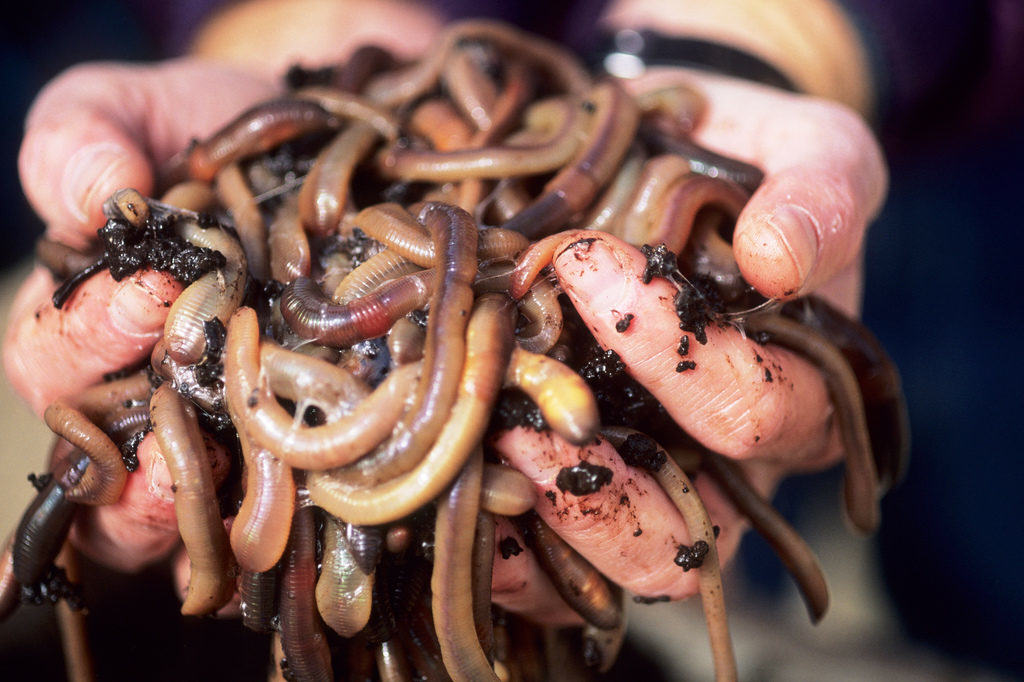
So what can we do?
Depending on the conditions in which you're cultivating you can nearly always take advantage of the benefits of Soil Food Web gardening to some extent, whether your garden is indoor or out in the sun, here are a few practical measures to consider:
No Digging
Soil structure, worm burrows, fragile fungal hyphae and bacterial colonies are all adversely affected by soil disturbance. Soil amendments like compost or manure can be top-dressed - layered on the soil surface, allowing the worms to dig it down into the soil. To maintain optimum microbial life it's best to avoid any kind of digging, but if really necessary we can lightly 'tickle' the top few centimeters to incorporate a green manure or compost top-dressing. 'No-Till' or 'No-Dig' gardening is becoming increasingly popular in the US as growers see the benefits of undisturbed living soil, there are cases of indoor gardens using large capacity fabric containers on their ninth or tenth crop cycle without disturbing or changing the soil in their pots - only top-dressing with worm compost and amendments. The opinion of these farmers is that the quality of the crop increases with each cycle as the micro-herd becomes more established, specialized and acclimatized.
No Chemicals
Hopefully it'll be obvious that chemical herbicides and pesticides will kill beneficial species as well as pests and thus greatly upset the balance of life in the soil, but few realize that chemical fertilizers are just as damaging - the salts they contain are an irritant to earthworms and other microorganisms and will drive them away from your garden, the chemicals in fertilizers can undergo reactions in the soil producing extreme acid or alkali compounds tremendously toxic to soil life. The use of synthetic fertilizers also creates nutritional imbalances in the soil which can cause soil compaction and encourage proliferation of weeds and pests while reducing beneficial species, not to mention the environmental damage caused to waterways by excess nutrient runoff.
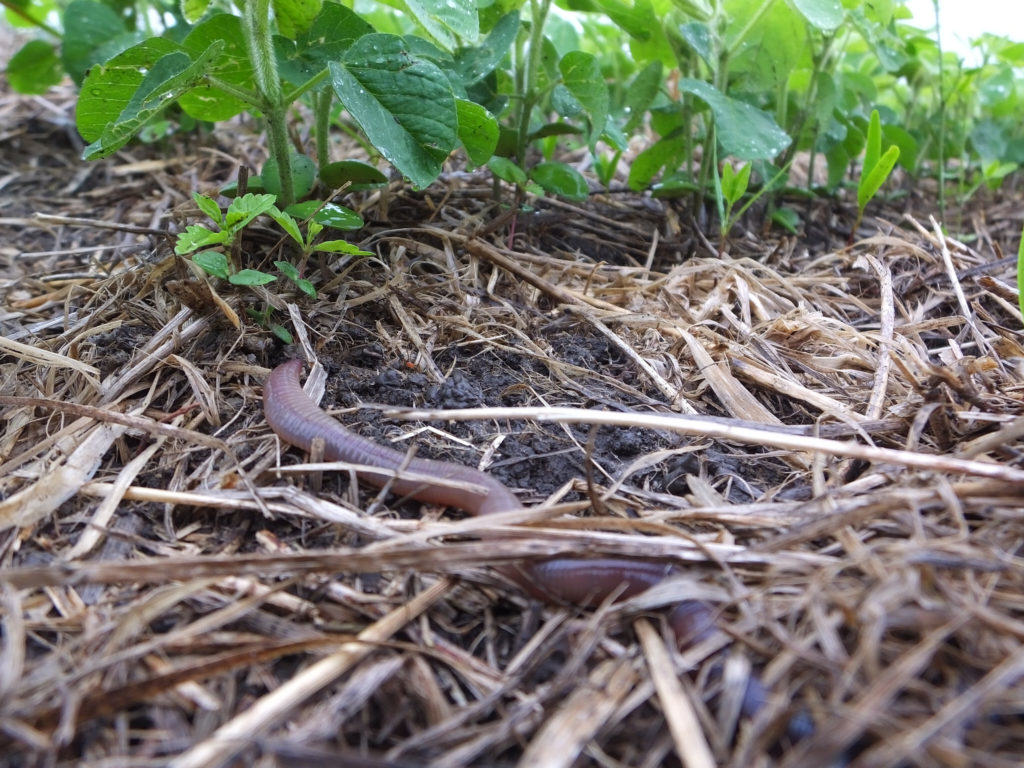
Cover Crops and Green Manures
Traditional gardening wisdom has taught us that non-crop plants are 'weeds' and offer competition for our main crop plants, as a result we've become obsessed with eradicating them with all kinds of methods, mechanical and chemical, both of which can be harmful to soil life and costly. It's worth noting that in natural environments, it's unusual see bare ground, healthy ecosystems with healthy soil will always have plant cover of some kind, this life above ground is necessary to have life below ground. Admittedly some very invasive plants can definitely be considered weeds and aren't to be encouraged in the garden, however the presence of many other types of plants can be of great benefit both to the soil and directly to the plants too.
Green manures are sown to occupy the soil between crop cycles and are chopped down and incorporated into the top layer of the soil before the following crop is planted, the main aim being to introduce organic matter to the soil, maintain microbial life and worm activity at an optimum level and reduce soil erosion between harvests.
Cover crops perform much the same function but grow during the whole crop cycle and as such can be thought of as a 'living mulch', giving soil cover to conserve moisture, suppressing weeds and providing a habitat for beneficial insects. Far from competing with the crop plants for water and nutrients, cover crop plants can greatly help to balance and improve soil conditions, increasing microbial diversity and nutrient availability, adding nutrients from the air, storing excess nutrients from the soil in their leaves which will be reintroduced during decomposition. When the cover crop plants get too big, it's a simple case of 'Chop and Drop' - just cut the plants to just above ground level, leaving the chopped leaves on the soil surface to decompose. At this time I like to add a few centimeters of mulch on top of the chopped leaves to create the right moisture conditions for decomposition and encourage earthworms to come to the surface, the cover crop plants will soon grow back through the mulch. It's a good idea to have as diverse a mix of cover crop species as possible, so as well as sowing soil-improving species like legumes (clover, alfalfa) and grasses (rye, barley), it's worth planting some kind of companion plants, these are plants that have some kind of beneficial influence directly on our crop, for example strong-scented herbs like Garlic, Mint and Coriander can help to keep harmful insects at bay while large, brightly-coloured flowers such as Marigolds and Calendula will attract beneficial insects like hoverflies and ladybirds, which love to eat aphids and other garden pests. It has even been suggested that companion planting with Yarrow or Borage can increase essential oil production!
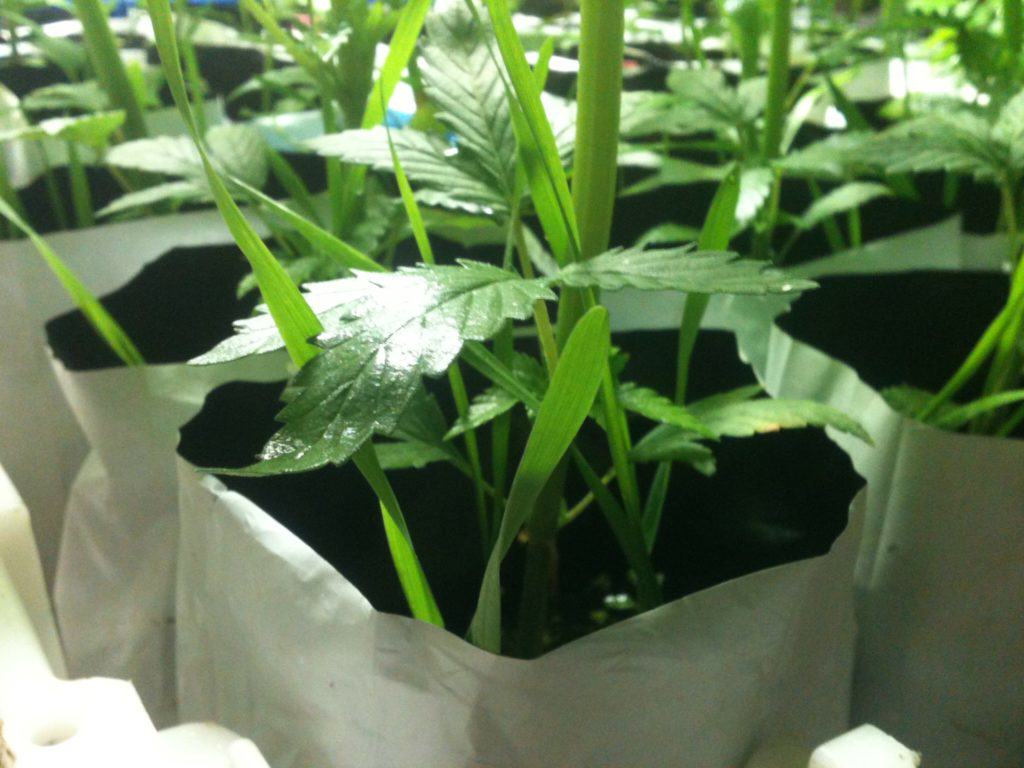
Mulch
If you don't like the idea of cover crops, at least try using an organic mulch to cover the bare soil, it will retain moisture, suppress weeds and provide shelter and food for the microbial life and worms who decompose it incorporating organic matter into the soil. Continue adding mulch as it breaks down to keep the worm population from migrating in search of food. I like to use barley straw but most types of fibrous organic matter will do the trick. Avoid using too much fresh green material as this can encourage anaerobic decomposition and threaten the balance of beneficial microbes.
Microbial Inoculants
It's becoming more common to see products containing inoculants of beneficial microbes on the market, the most commonly found are fungal inoculants of mycorrhizae and trichoderma, but other types of mixed microbe inoculants are becoming available. Normally sold as dormant spores in powder form to be mixed with water and applied to the soil, these are a great easy way to add life to your soil and periodically boost it when needed. Good quality worm compost is full of beneficial life and can be used as a good all-round microbial inoculant in addition to its fertilizing properties, it can be applied as a top dressing or using a compost tea brewer, made into an actively aerated compost tea and watered into the soil.
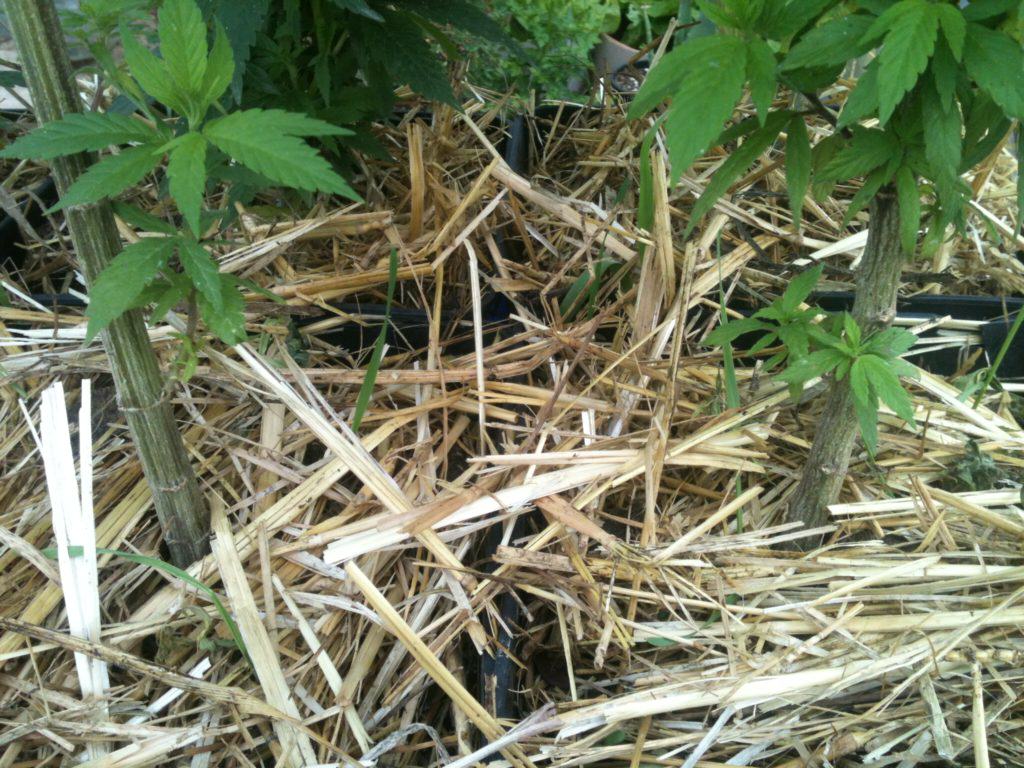
Correct Irrigation
One last important element of soil food web gardening is the move away from the traditionally accepted wet/dry/wet/dry cycle of cannabis irrigation. Most of the microbial activity takes place in the top few centimeters of soil, moisture is vital for the continued survival of the micro-herd and if the soil should dry up, many microbes will die, others will go into an inert state until adequate moisture levels are re-established. Try and keep the soil moist at all times, but not soaking, using mulch will greatly help conserve moisture levels at the soil surface.
I hope this has helped to give an insight into a different way of gardening, quite apart from the environmental benefits and improved yields and flavour of the final product, a 'living soil' with a balanced population of microorganisms has many potential advantages over a sterile growth medium, plants will have a more vigorous root system, suffer less from transplant shock, have increased drought tolerance, disease resistance and use nutrients more effectively, requiring less fertilizer input and avoiding the need for chemical pesticides.


































































